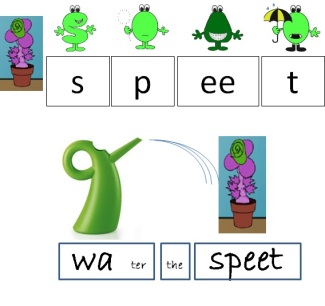I have been writing about the children in our intervention study for children with Childhood Apraxia of Speech (CAS). So far about half of the children referred to us appear to have difficulties in the domain of phonological memory with their overt phenotype corresponding to the subtype described by Dorothy Bishop Dodd as Inconsistent Deviant Disorder. Shriberg et al. (2012) have developed the Syllable Repetition Task as one means of identifying deficits in “memory processes that store and retrieve [phonemic, sublexical, and lexical] representations. We have been using this SRT test to differentiate children who have deficits in phonological planning versus motor planning. I described the profile that corresponds to difficulties with motor planning (transcoding) in a previous post. Today I will discuss the phonological memory or phonological planning profile that we see in approximately half of the children that are referred to us with suspected CAS.
These children can be identified by a qualitative analysis of their SRT performance and by their performance on the Inconsistency Test of the DEAP. Starting with the SRT, one child in our study for example was able to achieve 12/18 consonants correct when imitating 2-syllable items but only 5/18 consonants correct when imitating 3-syllable items, thus exemplifying the classic profile of a child with phonological memory difficulties – better nonword repetition performance for short versus long items. Qualitatively he tended toward consonant harmony errors even with some 2-syllable items, /bama/=[mama], /maba/=[mama], and then more frequently with the 3-syllable items, /nabada/=[mamada]. Addition of syllables and vowel errors also occurred, /manaba/ = [mamadada], /manabada/=[mimadama]. Poor maintenance of phonotactic structure and vowel errors were also observed on the Inconsistency Test, “helicopter” = [hokopapɚ], “elephant”= [ɛmpɩnt], which yielded an overall inconsistency score of 78% as many words were produced with multiple variants, e.g., “butterfly”= [bʌtfaɩ], [bʌtwaɩ], [bʌtətwaɩ].
The most striking illustration of the difficulties these children have with the storage and retrieval of phonological representations comes during our treatment sessions however. In this research program we are teaching the children nonsense words in meaningful contexts. For example in one scenario we teach the children the names of “alien flowers” and in one of the treatment conditions we use graphic stimuli, paired with gestural cues if necessary, to represent the syllables and phonemes in the words and phrases that we are teaching. Many of the children in our study learn all of the nonsense words without difficulty (5 words per goal/condition introduced over 6 45-minute sessions). However children with the phonological memory difficulties have great difficulty learning the words (SLP: This is a speet. Say speet. Child: speet. That’s right, speet. What is it? Child: I don’t know. SLP: Yes, you do it’s speet, the purple one, the purple one is speet, remember, say speet. Child: ‘speet’. SLP, you’ve got it, the purple flower is speet, it’s a speet, what is it, it’s a … Child: um, I don’t know, and so on).
The most effective intervention to use with these children closely mirrors the procedures described by Barbara Dodd as the “core vocabulary” approach and demonstrated by Sharon Crosbie in the video that accompanies their chapter in the Williams, McLeod and McCauley (2010) book. The video is lovely and shows how to use graphic stimuli and a chaining procedure to teach the child to produce a word consistently – the idea is to encourage the child to develop and implement their own phonological/motor plan rather than relying on an imitative model. The children respond to this technique really well and will learn to say the new words such as “speet” and “stoon” quickly and accurately. The trouble begins when our student SLPs want the children to use the new words spontaneously in phrases (e.g., “water the speet”). They have great difficulty remembering the word or even the carrier phrase without the imitative model and I have to work really hard to teach the student clinicians to withhold the imitative model in favour of using other cues to stimulate spontaneous production of the target words and phrases (SLP: What is it? Let’s start with the snake sound here…).
We have wonderful video of student SLPs learning these techniques as well as children achieving their goals. Tanya Matthews and I will be presenting them at ASHA 2014. The difference in the way that you implement therapy with these children is subtle but important. I am pretty sure that Case Study 8-4 in our book had a phonological planning deficit rather than the motor planning disorder that he was treated for. I can’t help but think that if he was treated with these techniques he might have made some progress in the three years that we followed his case (whereas he made literally no progress at all until he was treated with a synthetic phonics approach in second grade). I’d love to hear from you if you have any other ideas about how best to treat children with phonological memory problems and inconsistent deviant disorder.
